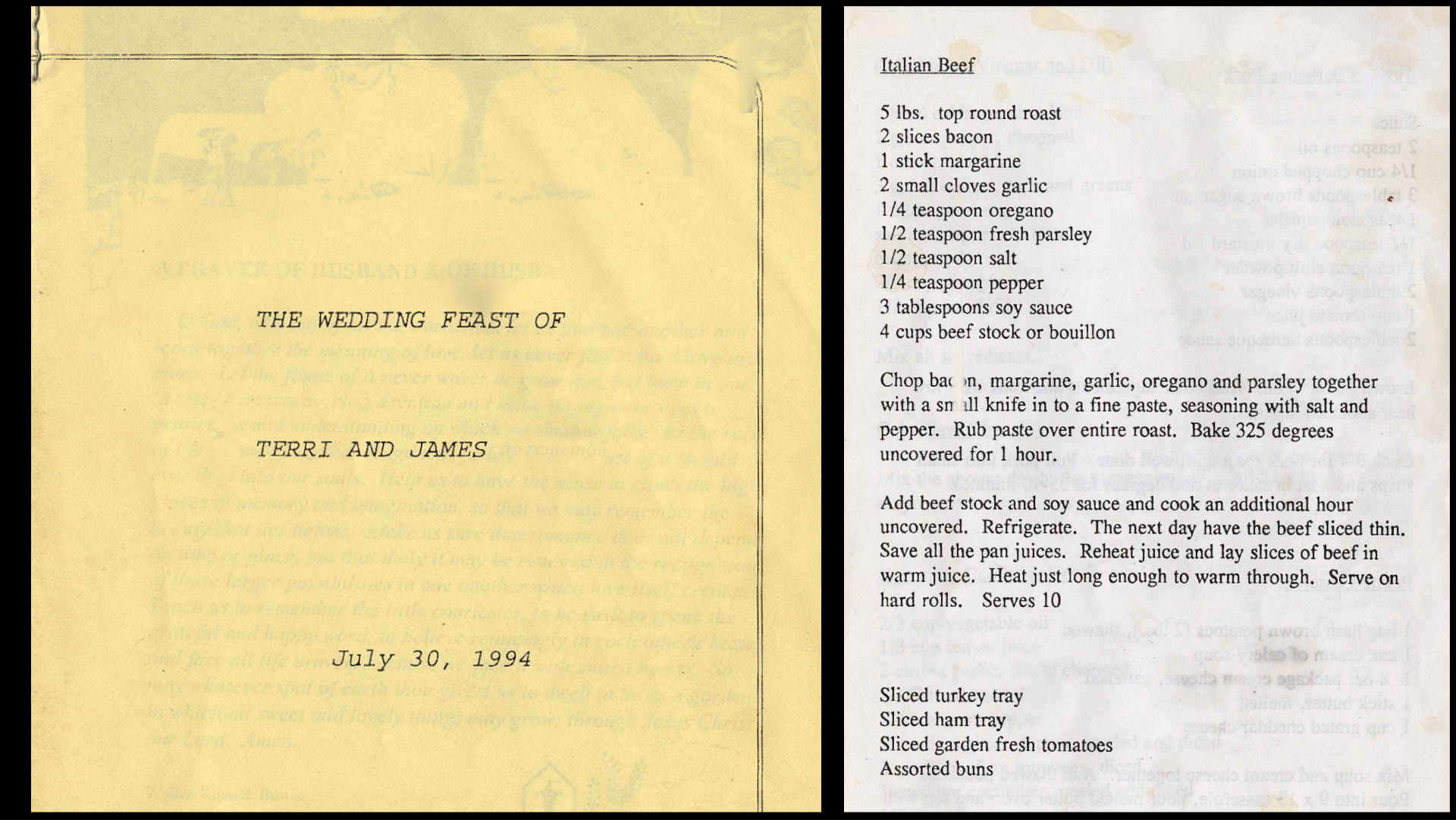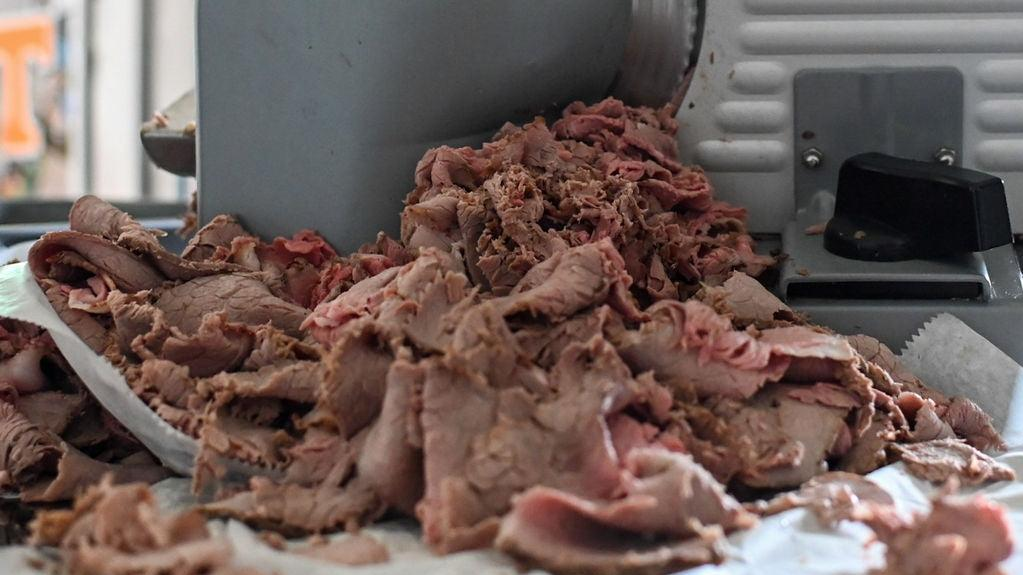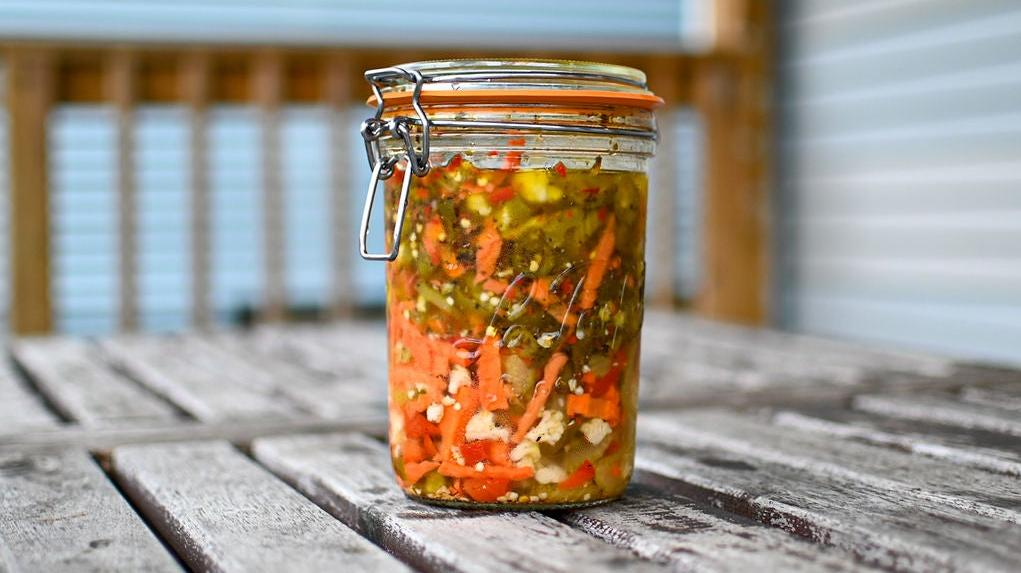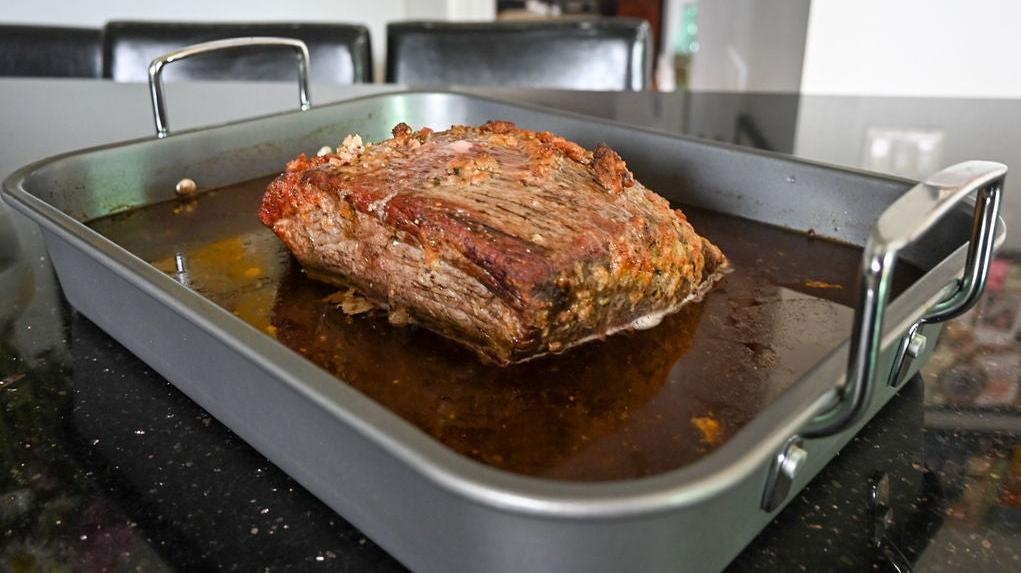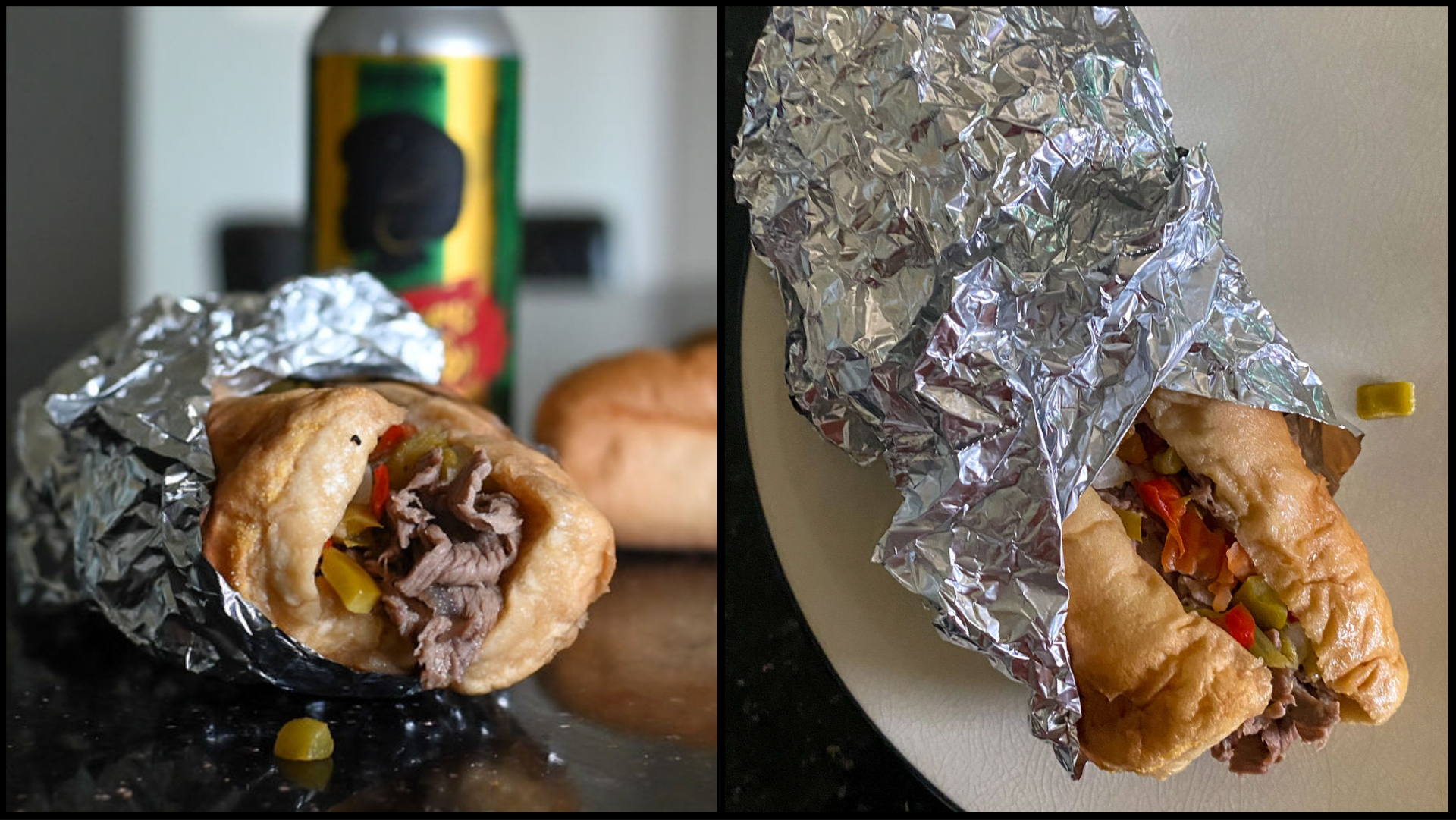How To Make Italian Beef From Scratch, Even Though Almost No One Does
Inspired by The Bear? Learn why most Chicago beef shops don't go to all that trouble.
This article exists because I can't have nice things.
Chicago, as a city, is kind of the same way. There's currently a very popular TV show based on arguably our most beloved local sandwich, authentically shot within one of its hallowed purveyors. The show is popular and successful! Show FX's The Bear to anyone outside the city and they largely enjoy its depiction of trauma, true-to-form rendering of toxic kitchen culture, and inky-black humor (at least as far as Rotten Tomatoes and my non-Chicago food friends go). Screen it for folks here in town and a goodly amount of responses come, in honking accents akin to my own, bitching about things that absolutely no one outside Chicago cares about:
- "River North ain't like that!"
- "The accents don't sound like this one uncle of mine."
- "You don't ever see 'em slicing the beef!"
- "Why wouldn't that place be packed with Carmy's hype?"
- "That property's worth too much for them to struggle like that."
- "Nobody bakes their own buns!"
- "Nobody makes the beef in-house!"
The last two are me. (Like I said, we have a tough time getting out of our own way sometimes). And I was halfway to finishing that last thought before I realized, hey, I know how much of a pain in the ass scratch beef is because it's kind of my family's thing. And I didn't really remember that until after watching The Bear. Now, behold the Kinko's-printed glory of my cousin's 1994 wedding cookbook. Wonders await.
Italian Beef, a family wedding staple
Functionally, for me, the Italian Beef life began when my downstate cousin found the Canadian dental student of her dreams. This was the first wedding I consciously remember attending. The women from my mother's side handled the catering, despite the bride being cousin on my Dad's side. Maybe they didn't want Methodists and Canadians running the culinary show on such a day. I didn't ask.
I don't know why my mom, aunt, and granny made a zine of it, but they did (see above). They probably didn't have as many things to do before broadband. But thanks to them, I've got a wedding-tested Italian Beef recipe to share.
I'll warn you now: as with The Bear, my mother's side of the clan is a Polish(/Irish) family. And my paternal tartan DNA isn't any more Mediterranean. But our family also had a ringer in the form of my uncle's teacher's Italian-American wife, Mrs. DiGiovanni.
Cousin's uncle's teacher's wife is as close as you get, and Mrs. D had some goodly hype of her own. It's not digitized, but search the Daily Herald (Arlington Heights, IL) on April 30, 1981* for "Cook's Italian recipes are popular throughout area" and you will see she was no trifler.
When we got the seal of approval for Wedding Beef from Mrs. D, we knew it was as close as we could come. So no, we're Definitely Not Italian, but rather, as the show intones, "more Italian than that guy is."
Why Italian beef is (usually) not made from scratch at hole-in-the-wall establishments
So yes, The Bear isn't terribly realistic. You don't usually have a Food and Wine Best New Chef running the show. Or a chef de cuisine formerly of Alinea and the Culinary Institute of America. Or ... uh ... a chef de cuisine, period.
I can get a beef at the Al's Beef near my workplace for $7 and change. If I order ahead, it's ready in 15-20 minutes. Speed is of the essence, beef is expensive, and real estate is far too dear to operate an in-house roll bakery at scale. It's not much space or time to roast a beef, braise in stock, cool, slice, and reheat. Most places are only doing the "reheat" part. And that's okay, because this sandwich is eff-off good even at its most economical. (Though I note that the original Al's still does it in house to fantastic results.)
You buy bread. You buy giardiniera. Most places (with some notable exceptions) get a prepared sliced beef in gravy product. Especially the hot dog stands that are also serving dogs, gyros, burgers, Polish sausages, etc.
These aren't flaws. These are the economic realities of serving a sandwich that's always been a working-class staple. Compromises and conveniences are half the point. And functionally, you shouldn't really care about any of these things to enjoy the show.
Television is not reality. You change things to heighten the drama and make the flow of "everyday" life more interesting. And if you piss off a dude who's watching The Bear in his wood-paneled Mount Greenwood "man cave," well then, tough shit. Everyone doesn't have to like everything.
But you know what? You CAN make Italian beef, from scratch, to great effect. It just takes a major life event to kick it into gear.
And also, remember that I gave you a shortcut already.

Let’s make too much beef—from scratch!
First thing's first, this is Mrs. DiGiovanni's recipe, unaltered from the Douglas County nuptials (again, see recipe in photo above). If you want to do it precisely like that, please be my guest—margarine and all. But if the soy sauce in there shows us anything, it's that futzing happens across the generations, and any chase for "authenticity" is just swiping at phantoms. So I made a VERY sloppy but nicely jiggly stock, bumped up the salt on the roast (it's not a lot!), and kept everything else pretty much the same. This is the recipe per five pounds of roast. So scale it up, scale it down, and it'll play along. But know that you have to start a good day and a half in advance of when you want to serve it.
To make the stock:
- Enough beef bones to fit on one sheet pan, rinsed and dried (marrow bones, shanks, neckbones, oxtail, whatever. I put a foot in there for true collagen magic.)
- 4 Tbsp. tomato paste (the tube stuff is convenient here)
- Flour, to dust
- 5 onions, peeled and chopped
- 1 celery stalk, washed, leaves and root removed, chopped
- 3-5 carrots, peeled and chopped
- Some thyme sprigs
- Small handful of black peppercorns
- 12 oz. butter (1½ sticks), room temperature
- 2 Tbsp. kosher salt
- 2 slices bacon
- 4 cloves garlic
- 1/2 tsp. oregano
- 1 Tbsp. fresh parsley
- 2 tsp. black pepper
- Olive oil, if needed
Rub the beef bones with tomato paste, dust them with flour, and roast at 325 degrees on a sheet pan until well browned. Do the same with the vegetables, minus the paste and flour.
Put the bones and vegetables in your big stockpot and cover with cold water. Add the thyme and peppercorns and bring very slowly to a low simmer. Don't let it rolling boil (though it's not the end of the world if that happens for a minute). I use a heat diffuser, but you can just keep it over the smallest burner.
Let it sloooOOOOoooowww simmer for like eight hours. I like to get it going at night and let it do its thing overnight. Sometimes I turn off the range hood so I have BEEF DREAMS. Anyway, it's gonna be ready by the time you do the rest of this. So strain it a couple times when it's go time and discard the solids. We aren't making French food here. You're doing great.
To make the beef:
Per 5 lbs. of roast:
Place everything in a food processor and make a paste. Mrs. D did this all with a knife, but I am no Mrs. D. If the mixture's a little hesitant, add some glugs of olive oil to smooth things along.
Then rub the roast with the paste, place on a rack, and refrigerate overnight if you have time. Otherwise, just chuck that big boy into a deep roasting pan and slide into a 325-degree oven. Roast for one hour, then pour in the stock and braise another hour. When it's a perfect just-medium-rare (call it 125-130 degrees), remove, cool, and refrigerate overnight.
Now, quantity-wise, I don't have a great answer for you. This is enough beef for enough sandwiches for the wedding. Family comes in, comes out, disapprovingly asks you what you're gonna do with that English degree, and the beef is enough for the high tide but fades fairly soon because it's just really good. Which is to say, I don't have a very good portion quantity for you and Christopher Kimball refuses to answer my calls. You'll be fine. You have beefs.
What to do on Day 2 (I told you this was a lot of work)
Mrs. D used to cook the beef and take it to the butcher for slicing so she could serve. You can't really do that anymore because of those meddling health inspectors, but I happen to own a deli slicer and will point to this article the next time my wife asks why we still keep the deli slicer around.
This is why we refrigerated the beef the day before. The beef firms up so you can run it easily through the slicer (the one you hastily placed on your wedding registry when your intended was not paying attention). And if you do your slicing with a knife, know that I appreciate and honor you but I do not share your journey.
Once you've got slices thin enough to read the Sun-Times through, put them back in the roasting pan and gently bring it back up to temperature. And this is the most important part: you might as well have a dipped beef at this point in your multi-day journey.
Scoop the heated beef slices and gravy onto a warm French roll (325 degrees for 5 minutes will do it), add giardiniera if you please, and then it's time to dip. This is neither as dilettante-ish nor as sloppy as you think.
First, prepare a sandwich-size-appropriate sheet of dry wax paper. Second, get a sheet of foil slightly larger and lay the paper over the shiny-side-up foil. Third, confidently grasp your assembled sandwich with tongs top/bottom, keeping all toppings secure as possible on its journey. Dunk bottom-side first for 1.5 seconds. Flip (confidently!) and dunk the top side for 1.5 seconds. Immediately bring it to the prepared sandwich wrap and roll up to get to perfect equilibrium. Give it a minute or so and you're good to go.
Unwap. Enjoy. Savor the taste of the world's most perfect sandwich while I get the subliminal satisfaction of you trying out a recipe that's very important to my family. It appeared in my own wedding cookbook over a decade later!
But right as you take that last, perfect bite, before you crumple up the foil and paper, be sure to stop and say to yourself, "Wow, this was quite involved." And maybe next time you, too, will point to the TV and voice an opinion that no one asked for.
*The author graciously thanks Michelle Riopel, Chris Mika, and the Elk Grove Village Public Library for the timely and helpful research assist.
